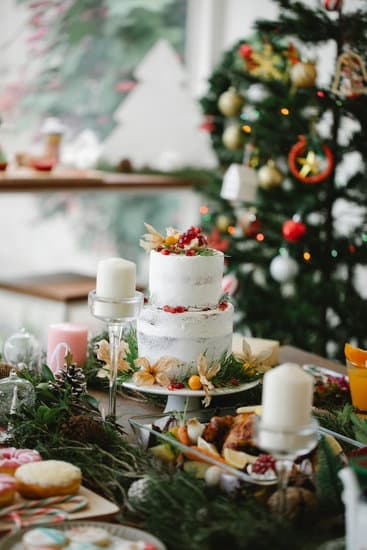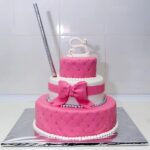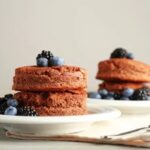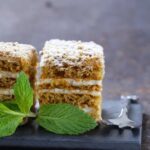Cake decorating advice is essential for anyone looking to create stunning and delicious cakes that wow their guests. Whether you’re a baking enthusiast or a professional pastry chef, having the right guidance can make all the difference in achieving your desired results. From selecting the perfect cake to mastering various icing techniques, this article will provide you with valuable tips and tricks to elevate your cake decorating skills.
When it comes to cake decorating, having the essential tools is crucial. Piping bags, offset spatulas, and cake decorating kits are just a few of the items you’ll need to bring your creative vision to life. But knowing how to use these tools effectively is equally important. That’s where expert advice comes in handy, guiding you on not only what tools to use but also how to use them correctly for best results.
In this comprehensive guide, we’ll cover everything from choosing the right type of cake for decorating to troubleshooting common mistakes that beginners often encounter. Whether you’re looking to improve your piping skills or learn new design techniques, this article will equip you with the knowledge and confidence needed to take your cake decorating abilities to the next level. So let’s dive in and explore the wonderful world of cake decorating together.
Essential Tools for Cake Decorating
Decorating a cake like a pro requires the right tools at your disposal. From piping bags to offset spatulas, each tool plays a crucial role in achieving beautifully decorated cakes. One of the most essential tools for cake decorating is the piping bag.
These bags come in various sizes and materials, allowing for different types of icing to be used for creating intricate designs on cakes. Whether you’re aiming for simple swirls or detailed images, a piping bag is a must-have tool in every baker’s kit.
Another indispensable tool in cake decorating is the offset spatula. This tool helps in spreading icing smoothly and evenly on the surface of the cake, allowing for a flawless finish. With its angled blade and comfortable handle, an offset spatula is perfect for achieving professional-looking decorations with ease.
Additionally, investing in a good quality cake decorating kit can provide you with all the necessary tools needed to elevate your cake decorating game. These kits often include various tips, couplers, and other accessories that allow for creativity and precision when decorating cakes.
When it comes to cake decorating advice, having the right tools can make all the difference in creating stunning cakes that impress both visually and taste-wise. Whether you’re a beginner or experienced baker, having these essential tools at your disposal will enable you to explore different techniques and enhance your skills in cake decoration.
So next time you’re gearing up to decorate a cake, make sure you have your piping bags, offset spatulas, and cake decorating kits ready to unleash your creativity onto your delicious masterpiece.
Choosing the Right Cake
When it comes to cake decorating, selecting the right type of cake is crucial for the success of your design. Different cakes have unique textures and flavors that can greatly impact the overall look and taste of your decorated masterpiece. Here are some tips to help you choose the perfect cake for your decorating project:
- Consider the flavor: The first thing to think about when choosing a cake for decorating is the flavor. Whether you opt for classic vanilla, rich chocolate, or fruity flavors like lemon or strawberry, make sure the taste complements the icing and decorations you plan to use.
- Texture matters: The texture of the cake also plays a vital role in how well it holds up to decoration. A denser cake like pound cake is great for intricate designs and stacked cakes, while a light and fluffy sponge cake works well with delicate decorations.
- Choose a sturdy base: For layered cakes or tiered designs, select a sturdy base that can support the weight of additional layers without collapsing. Consider using a firm sponge or butter cake that can withstand stacking.
Ultimately, the key to selecting the right cake for decorating is understanding how its flavor and texture will complement your chosen icing and design elements. Experiment with different types of cakes to find what works best for your specific project and don’t be afraid to try something new. With these tips in mind, you’ll be on your way to creating stunningly decorated cakes that not only look beautiful but taste delicious too.
Cake Preparation
When it comes to cake decorating, proper preparation is essential to ensure a flawless final result. One of the first steps in preparing a cake for decorating is leveling. This involves trimming the top of the cake to create an even surface for stacking and decorating.
A leveled cake not only looks more professional but also allows for easier application of frosting and decorations. To level a cake, you can use a long serrated knife or a cake leveler tool for more precise results.
After leveling your cake, the next step is filling. Filling a cake involves adding layers of frosting, ganache, fruit preserves, or other fillings between the cake layers to add flavor and moisture. When filling a cake, it’s important to spread each layer evenly and avoid overfilling, which can cause the layers to slide or collapse. Additionally, consider using a dam of frosting around the edges of the layer before adding the filling to prevent it from oozing out.
Once your cake is leveled and filled, it’s time to apply a crumb coat. A crumb coat is a thin layer of icing applied to seal in any loose crumbs on the surface of the cake before adding the final layer of frosting. This step helps create a smooth canvas for decorating and prevents crumbs from mixing into the final layer of frosting.
To apply a crumb coat, spread a thin layer of frosting over the entire cake using an offset spatula, then chill the cake in the refrigerator until firm before adding additional layers of frosting. By following these detailed steps for preparing your cake for decorating, you’ll set yourself up for success in creating beautifully decorated cakes that are as delicious as they are visually appealing.
Utilizing these tips allows you to focus on honing your creativity with design experimentation while trusting that your preparation work will yield professional-looking results every time you bake and decorate a new creation.
Icing and Frosting Techniques
When it comes to cake decorating, mastering different icing and frosting techniques is essential to creating beautifully decorated cakes. Each type of icing or frosting has its unique characteristics and uses, so having a variety of options in your decorating toolkit can elevate your creations.
Buttercream
Buttercream is a classic choice for cake decorating due to its creamy texture and versatility. Whether you prefer American buttercream (made with butter and powdered sugar) or Swiss meringue buttercream (which involves cooking egg whites and sugar before adding butter), mastering the art of working with buttercream can open up a world of possibilities for creating smooth finishes, intricate piping designs, and textured decorations on your cakes.
Royal Icing
Royal icing is another popular choice for decorators, known for its ability to dry hard and hold intricate shapes well. This type of icing is commonly used for piping delicate details like lace patterns, flowers, or other decorations that require precision. While royal icing may take some practice to achieve the right consistency for different techniques, it’s worth learning how to work with this versatile medium for more intricate designs on your cakes.
Fondant
Fondant is a favorite among many decorators due to its smooth finish and ability to create clean lines on cakes. Rolled fondant can be draped over a cake to achieve a flawless surface or used to sculpt 3D decorations like figures or flowers. While working with fondant requires some patience and practice to avoid air bubbles or tearing, the polished look it provides makes it a go-to choice for special occasion cakes where a flawless finish is desired.
Experimenting with different icing and frosting techniques will help you develop your own style as a cake decorator. From the rich flavor of buttercream to the precise details possible with royal icing and the sleek finish of fondant, each technique offers unique possibilities for bringing your cake decorating vision to life. Don’t be afraid to try out new techniques or combine different types of icings/frostings for truly innovative designs that showcase your creativity.
Remember that practice makes perfect when it comes to mastering cake decorating techniques – so don’t get discouraged if your first attempts aren’t flawless. With time, patience, and dedication to honing your skills, you’ll soon be wowing friends and family with beautifully decorated cakes that taste just as good as they look.
Piping and Design Tips
When it comes to cake decorating, mastering piping techniques can take your creations to the next level. One important piece of cake decorating advice is to invest in a variety of piping tips to achieve different designs and effects.
From simple lines and dots to intricate floral decorations, the right piping tip can make a significant difference in the overall look of your cake. Experimenting with different tips and practicing consistent pressure control will help you develop your piping skills over time.
In addition to using different piping tips, varying the consistency of your icing or frosting can also impact the outcome of your decorations. Thicker icing is ideal for creating more defined shapes and figures, while thinner icing is better suited for writing or intricate details.
It’s essential to practice with different consistencies to understand how they work with various piping tips and design ideas. Remember that practice makes perfect when it comes to mastering piping techniques, so don’t be afraid to keep trying until you achieve the desired results.
Another valuable piece of cake decorating advice for creating beautiful designs is to sketch out your ideas before you start piping. Having a rough outline or blueprint can guide you as you decorate your cake and prevent mistakes.
Whether you’re working on a specific theme or pattern, having a visual reference can help ensure that your design turns out as planned. With patience, practice, and the right tools and techniques, you’ll soon be creating stunning cakes that will impress friends and family alike.
| Piping Tips | Effect |
|---|---|
| Round Tip | Create borders or write messages |
| Star Tip | Make rosettes or stars for decoration |
| Leaf Tip | Add foliage or leaf designs on cakes |
Troubleshooting Common Cake Decorating Mistakes
Cake decorating is a delightful and rewarding hobby, but it can also come with its fair share of challenges, especially for beginners. Making mistakes while learning the art of cake decorating is perfectly normal and part of the learning process. In this section, we will address some common cake decorating mistakes that beginners often make and provide helpful solutions to fix them.
Here are some common cake decorating mistakes and how you can troubleshoot them:
- Problem: Uneven Frosting – If your cake has uneven frosting with patches showing through, try chilling the cake before adding another layer of frosting. This will help create a smooth base for your decorations.
- Problem: Cracks in Fondant – Fondant can be tricky to work with and may develop cracks as you cover the cake. To fix this issue, gently knead the fondant and roll it out again before applying it to the cake. Make sure to smooth out any air bubbles or imperfections as you go.
- Problem: Collapsing Layers – If your cake layers collapse or sink in the middle, it could be due to underbaking. To prevent this issue, make sure to bake your cakes for the recommended time and temperature until a toothpick inserted comes out clean.
Remember that practice makes perfect when it comes to cake decorating. Don’t get discouraged by mistakes; instead, use them as learning opportunities to improve your skills. By following these troubleshooting tips and practicing regularly, you’ll soon become a confident and skilled cake decorator.
Final Touches and Presentation
Another key tip for adding final touches to your decorated cake is to pay attention to color coordination. Make sure that the colors of your edible decorations and garnishes enhance the colors used in the cake design. For instance, if you have a pastel-colored cake, incorporating matching pastel-hued sprinkles or edible glitter can create a cohesive and visually pleasing presentation. Additionally, using contrasting colors strategically can also create a striking visual impact.
When it comes to presentation ideas for your decorated cake, consider using cake stands or platters that complement the style of the cake. Choosing appropriate serving ware can enhance the overall appeal of the dessert and make it more inviting for guests.
Furthermore, incorporating elements such as fresh fruit arrangements, chocolate drizzles, or even thematic props can add a touch of creativity and flair to your presentation. Remember, presentation is key when it comes to creating an impressive and memorable cake display.
| Edible Decorations | Garnishes | Presentation Ideas |
|---|---|---|
| Edible flowers | Sprinkles | Cake stands/platters |
| Chocolate curls/shavings | Fresh fruit arrangements | Thematic props |
Resources for Further Learning
For those looking to further hone their cake decorating skills, there are a plethora of resources available that can assist in expanding knowledge and providing new techniques to try out. One valuable resource is the wide array of books dedicated to cake decorating, offering step-by-step instructions, tips, and inspiration for creating stunning designs.
Some highly recommended titles include “The Contemporary Cake Decorating Bible” by Lindy Smith and “Cake Confidence” by Mandy Merriman, both of which cater to beginners as well as more experienced decorators.
Another avenue for learning more about cake decorating is through online courses, where expert instructors provide comprehensive lessons on various aspects of cake decoration. Websites like Craftsy (now Bluprint) and Skillshare offer a range of courses that cover everything from basic piping techniques to intricate fondant decorations. These online platforms also allow students to learn at their own pace and interact with a community of fellow cake decorating enthusiasts.
In addition to books and online courses, exploring websites dedicated to cake decorating can be immensely beneficial for those looking to enhance their skills. Websites like Cake Central and SugarEd Productions provide tutorials, forums for discussions, and galleries showcasing impressive cake designs from around the world.
These platforms serve as great sources of inspiration and information for decorators of all levels. By taking advantage of these resources, individuals can continue to improve their craft and unlock new possibilities in the world of cake decoration.
Conclusion
In conclusion, cake decorating is a delightful art form that allows individuals to express their creativity and passion for baking. Throughout this blog post, we have discussed the importance of having the right advice when it comes to cake decorating. From essential tools like piping bags and offset spatulas to choosing the perfect cake flavors and textures, each step plays a crucial role in creating beautifully decorated cakes.
Moreover, we delved into various icing and frosting techniques, including buttercream, royal icing, and fondant, as well as provided valuable tips on piping techniques for creating intricate designs. Additionally, we addressed common mistakes beginners make while decorating cakes and offered solutions to correct them. By following these guidelines and practicing consistently, aspiring cake decorators can hone their skills and create stunning masterpieces.
As you embark on your cake decorating journey, remember that practice makes perfect. Don’t be afraid to experiment with different techniques and designs. The more you practice, the more confident you will become in your abilities.
And always remember that there are abundant resources available – from books to online courses – where you can further enhance your cake decorating skills. So go ahead, unleash your creativity, and let your imagination run wild as you adorn cakes with beautiful decorations. Do not hesitate to seek out additional guidance or join communities of fellow enthusiasts; after all, the world of cake decorating is vast and full of endless possibilities.
Frequently Asked Questions
What Are the Best Tips for Cake Decorating?
One of the best tips for cake decorating is to make sure you have the right tools and equipment on hand before starting. This includes piping bags, different tips, offset spatulas, and a turntable. It’s also important to let your cake cool completely before decorating to prevent melted frosting.
What Are the 7 Different Cake Decorating Techniques?
There are seven different cake decorating techniques that can help you create beautiful designs on your cakes.
These include piping using different tips for borders, flowers, and writing, spreading frosting smoothly with an offset spatula, creating texture with a comb tool or fork, using stencils for intricate designs, applying edible glitter or luster dust for shimmer, making fondant decorations like bows or figures, and painting directly on the cake with food coloring.
What Should You Consider in Decorating a Cake?
When considering decorating a cake, it’s important to think about the flavor and texture of both the cake and frosting. Ensure they complement each other well. Additionally, keep in mind the theme or occasion for which you are decorating the cake – whether it’s a birthday party, wedding, or holiday celebration.
You should also consider any dietary restrictions of those who will be eating the cake when choosing ingredients and decorations. Lastly, don’t forget to plan your design in advance by sketching it out or gathering inspiration from other sources to ensure a cohesive look on your finished product.

Welcome to our cake decorating blog! My name is Destiny Flores, and I am the proud owner of a cake decorating business named Cake Karma. Our mission is to provide delicious, beautiful cakes for all occasions. We specialize in creating custom cakes that are tailored specifically to each customer’s individual needs and tastes.





